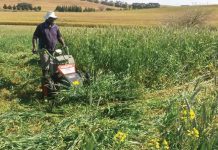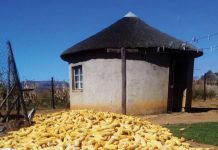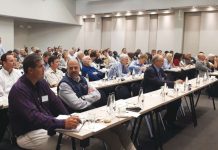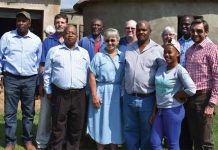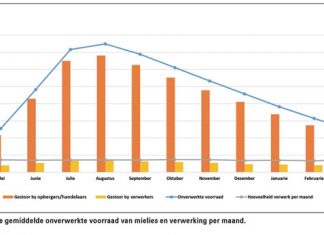July 2017
MICHELLE MOKONE, agricultural economist, Grain SA
The Fertasa 57th Annual Congress held in Durban, revolved around the theme sustainability. The congress took place on 4 May with speakers from different backgrounds within the agricultural industry presenting on different elements related to sustainability.
The congress was attended by various industry role-players from fertiliser companies, producer organisations and government departments.
We received a warm welcome from the Fertasa CEO, Dr Pieter Haumann, who welcomed the Fertasa chairman, Adriaan de Lange, to deliver the Chairman’s report.
In his Chairman’s report for the 2016/2017 year, De Lange highlighted two events that had an effect on the agricultural industry in 2016. He started by highlighting the after effects of the worst drought in 25 years that had a major effect on crop production throughout the country and its influence that filtered through to the economy and farm conditions.
The drought exacerbated farm debt to increase by 27%, while maize prices increased at the back of a weaker rand and shortage of stock sent prices trading at import parity levels.
Weather was not the only problem that the industry was faced with in the drought stricken period, however. The second crisis that affected the local agriculture industry was caused by an influx of cheaper chicken imports from Northern American and European markets, which has been a problem since 2009. This had a devastating effect on the local poultry industry.
The long term effect of dumping, if left unchecked, could impact on industries such as grain production, banking, insurance, agrochemical, fertiliser, packaging, logistics and processing industries and ultimately, this could result in major job losses.
With controllable situations such as dumping, the industry requires strong political and industry leadership to introduce sustainable measures to protect the local industries, the economy and its people.
Touching on the fertiliser industry, De Lange noted the pressure that continues to remain on international fertiliser prices. The rapid increase in new capacity is currently outpaced by demand, which impacts on prices. It is therefore believed that international fertiliser prices are likely to remain low for the foreseeable future as demand grows and the industry rationalises.
The demand for fertiliser is impacted due to an increase in environmental and health consciousness and because concepts such as nutrient use efficiency, water use efficiency and nutrition are becoming high on the global agenda.
Therefore, the sustainability of this industry is sustained by water, soil, climate change and agriculture as a whole. The speakers took it back to the basics, explaining the way forward in terms of the sustainability of these elements that impact on the sustainability of the fertiliser industry.
Mr Paul Makepeace of the African Fertilizer and Agribusiness Partnerships (AFAP) indicated in his presentation on the medium term future of the global fertiliser industry, that external forces such as climate change and policy may have a greater impact on the fertiliser industry.
Climate change has an opportunity to grow the fertiliser industry, rather than affecting the demand negatively. Meanwhile, international factors are more likely to affect the growth of this industry, rather than domestic policy factors.
On the sustainability of water, Dr Sylvester Mpandeli drew attention to the goal of the Water Research Commission (WRC), which is to generate relevant information that can benefit the water reliant industries, such as agriculture.
He said that smallholder farmers have extreme adaptability and they need to be given information to avoid certain risks in this water scarce industry. Furthermore, Dr Mpandeli indicated the WRC’s goal, which is to benchmark based on what is happening internationally in order to align their activities with the global agenda.
With soil as an integral part of agriculture, Prof Isaiah Wakindiki posed an interesting question which is one that we need to ponder on in a changing world; ‘What if there is no soil?’
The country would produce less food against projected demand and this would lead to higher food prices and the industry would reach a crisis point which would trigger a cycle of bigger effects such as health and food security. He concluded his presentation on sustainability of soil by saying that we must get the system right by developing sustainable management practices and agricultural products such as bio fertilisers.
Highlighting the implications of climate change on agriculture, Prof Roland Schulze, Centre for Water Resources Research, University of KwaZulu-Natal, indicated that our current climate is anything but sustainable.
It impacts on the loss of fertiliser through drainage which is caused by heavy rains that takes away the soil nutrients.
Ultimately, this impacts on crop yields, food security and of course the fertiliser industry. This was concluded with the need to recognise that climate issues and change are real. We need to implement adaptation and improve on coping strategies; we also need to realise that this is a multi-generational issue and admit the need to mitigate and reduce emissions.
Last on the programme was Dr Herman van Schalkwyk, group chief executive officer of Suidwes Landbou, who spoke about the competitiveness and the sustainability of South African agriculture.
In order for the industry to reach long term sustainability, the country has to be competitive and this depends on a host of factors such as product quality, efficiency and productivity as well as the capacity to compete globally. However, the sustainable advantage requires a continuous upgrading of resources and as such we need strong investment in resources while incorporating old values.
In a nutshell, the Fertasa Congress encapsulated the representation of what current affairs mean for the future of the agricultural industry by taking into consideration the direct and indirect linkages in this industry and mapping out the supportable strategies to be implemented in order to reach a common goal, which is sustainability.
Publication: July 2017
Section: Focus on





